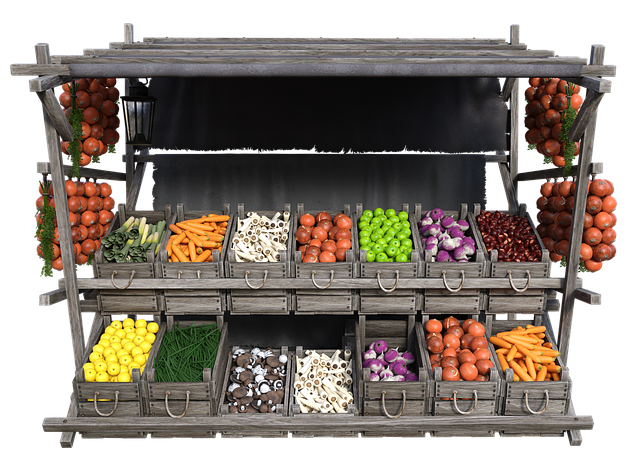Optimize Local Food Delivery: Effective Meal Planning & Grocery Shopping
Personalize meal planning by understanding dietary needs, preferences, and lifestyle choices for eff…….
Introduction
The rise of local food delivery and meal preparation services has revolutionized the way we access and enjoy meals. This comprehensive article delves into the intricacies of these services, their impact on communities, economies, and the environment. We will explore the historical context, current trends, technological advancements, economic significance, and future prospects of local food delivery and meal preparation. By the end of this article, readers will have a clear understanding of how these services are shaping the culinary landscape and what they can expect as this industry continues to evolve.
Understanding Local Food Delivery and Meal Preparation
Local food delivery and meal preparation refer to services that provide consumers with fresh, locally-sourced meals either through direct delivery or prepared for pickup. These services connect local producers, restaurants, and home cooks with individuals seeking convenient, healthy, and sustainable dining options. The core components include sourcing ingredients from local farmers and suppliers, preparing meals in central kitchens or by individual chefs, and delivering them to customers’ doorsteps. Historically, the concept has evolved from simple home-based meal services to a sophisticated industry leveraging technology, logistics, and culinary expertise.
Global Impact and Trends
The global impact of local food delivery and meal preparation is profound, with trends indicating a shift towards sustainable, health-conscious living. In regions like North America and Europe, these services have become mainstream, with startups and established companies alike vying for market share. In contrast, emerging markets are adopting these models at different paces, influenced by local culture, economic factors, and infrastructure development. Key trends include the adoption of organic and plant-based options, personalized meal plans, and subscription-based services. The rise of ghost kitchens, which exclusively prepare food for delivery or takeout, is also a significant trend shaping this industry.
Economic Considerations
From a macroeconomic perspective, local food delivery and meal preparation are integral to the economies of cities and regions. They create jobs, support local agriculture, and reduce the carbon footprint associated with traditional food distribution systems. Market dynamics reveal a high demand for convenience without compromising on quality or health. Investment patterns show a growing interest from venture capitalists and angel investors, recognizing the potential for scale and profitability. These services are also vital in urban areas where space constraints make cooking at home challenging, especially for working professionals and families.
Technological Advancements
Technology has been instrumental in advancing local food delivery and meal preparation. Innovations in logistics software optimize delivery routes, reducing fuel consumption and improving delivery times. Apps and platforms that facilitate order placement, payment, and customer feedback have become standard. AI and machine learning are used to personalize meal plans based on dietary preferences, past orders, and nutritional goals. In the future, we can expect further advancements like blockchain for supply chain transparency and automated kitchens using robotics and smart technology to prepare meals at scale.
Policy and Regulation
Policies and regulations play a crucial role in shaping the local food delivery and meal preparation industry. Food safety standards, zoning laws for commercial kitchens, and transportation regulations all impact operations. In some regions, there are incentives for businesses that source locally or adopt sustainable practices. Legislation around data privacy and the gig economy also affects how companies operate. Ensuring compliance with these frameworks is essential for growth and sustainability in the industry.
Challenges and Criticisms
Despite its advantages, local food delivery and meal preparation face several challenges and criticisms. These include concerns over food safety, environmental impact, and labor practices. Another challenge is scaling operations while maintaining the quality and freshness of meals. Critics also argue that these services may contribute to the decline of traditional dining experiences and local restaurants. Solutions to these issues involve adopting best practices in sustainability, ensuring fair labor conditions, and fostering partnerships with local businesses.
Case Studies
Several case studies illustrate successful applications of local food delivery and meal preparation. Companies like Blue Apron, HelloFresh, and local startups have demonstrated the viability and scalability of these services. Lessons from these companies include the importance of a robust supply chain, customer-centric technology, and strategic marketing. They also highlight the need for adaptability in response to changing consumer preferences and market conditions.
Future Prospects
The future of local food delivery and meal preparation is promising, with potential growth areas including expanded menu options, integration with fitness and health tracking apps, and further advancements in technology. Emerging trends such as zero-waste cooking, vertical farming, and alternative proteins will likely influence how these services evolve. Strategic considerations for businesses in this space include diversification of offerings, sustainability initiatives, and leveraging data analytics to enhance customer experience.
Conclusion
Local food delivery and meal preparation represent a significant transformation in how we access and enjoy meals. These services offer convenience, support local economies, and have a positive impact on the environment. As the industry continues to evolve, it will likely become even more integrated into daily life, shaping how we think about food, health, and community.
FAQs
Q: How does local food delivery benefit the community?
A: Local food delivery supports local economies by providing a market for local farmers and producers, reduces the carbon footprint by eliminating long-distance transportation of goods, and offers fresh, healthy meal options to consumers.
Q: What are some challenges faced by local food delivery services?
A: Challenges include ensuring food safety, maintaining meal quality and freshness, managing logistics efficiently, addressing labor concerns, and adapting to changing consumer preferences.
Q: How is technology impacting the local food delivery industry?
A: Technology has streamlined operations through route optimization software, created convenient ordering and payment platforms, personalized meal plans using AI and machine learning, and paved the way for innovations like blockchain for supply chain transparency.
Q: Are there any regulatory considerations for starting a local food delivery service?
A: Yes, startups must navigate food safety regulations, zoning laws for commercial kitchens, transportation regulations, data privacy laws, and labor laws to ensure compliance and legal operation.
Q: What are some future trends for local food delivery and meal preparation?
A: Future trends may include zero-waste cooking, vertical farming, alternative proteins, integration with health and fitness tracking apps, and further advancements in technology like AI and machine learning.

Personalize meal planning by understanding dietary needs, preferences, and lifestyle choices for eff…….

The local food delivery industry has seen a significant shift, driven by changing consumer preferenc…….

Farm-to-table meal services are transforming dining by focusing on Local Food Delivery and Meal Prep…….

The local food delivery industry has undergone a significant transformation, fueled by changing cons…….

Local food delivery services and meal prep platforms have transformed access to fresh, locally sourc…….

Local Food Delivery and Meal Preparation services are transforming dining experiences for people wit…….

Local food delivery and meal preparation services are transforming event catering by offering divers…….

Local food delivery services streamline meal preparation for busy individuals by offering a diverse…….